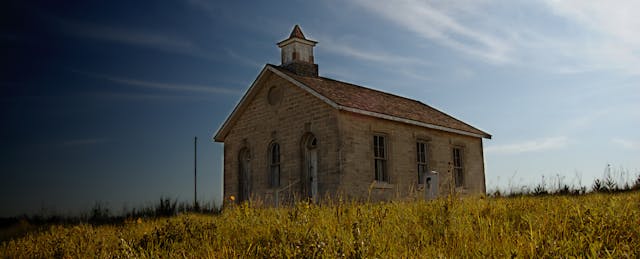When I got the call 18 months ago from Achievement First to help design a “next-generation” school model, it was a school designer’s dream. Achievement First has been running great schools serving low-income kids in New York, Connecticut, and Rhode Island for 15 years. They embodied the profile of the “successful incumbent”: well-established schools which rarely want to take big innovation risks. And yet, a place like Achievement First has built such incredible wisdom and capacity for running great schools, what might it mean to combine that wisdom with a fresh approach to doing school? And so, we began our journey to design and build the “Greenfield” model. Imagine an open, green field with nothing on it; if you could build any school what you build?
We are three months away from launching the Greenfield model in New Haven, CT– one elementary school starting with kindergarten and one middle school starting with 5th and 6th grades. We’ve visited dozens of inspiring schools, engaged experts, held countless design sessions, run pilots, and built and rebuilt instructional approaches. Central to our design has been involving students and parents, and employing a “human-centered” approach.
We wanted our design process to be truly human-centered, which weighed heavily into our decision to partner with IDEO in the first phase of our journey. Through our collaboration, we expanded our appreciation for this kind of design. Being human-centered is more than a step in a process, it’s more than an empathic skill, it’s a deeply held disposition. It’s in your bones.
And when it’s in your bones, you don’t just interview students and parents, you go home with them right after school, stay with them until they go to sleep and rejoin them in the morning when everyone wakes up before school. When it’s in your bones, you don’t run a focus group, you run design workshops where students and parents brainstorm and build new ideas. When it’s in your bones, you listen and observe way more than you talk.
From engaging with students and parents in these ways, our design is better. We understood from a kindergartner that extracting DNA from a strawberry was the coolest thing she ever did – she likes doing authentic and rigorous work and using her hands to make discoveries. We learned from a first-generation college student that the support network he had back home was at least as important as the academic preparation he received. So, we designed Goal Teams and Dream Teams into our model. Students in “running-partner” pairs constantly give each other feedback and push each other to new heights during daily Goal Team meetings. Dream Teams include your running partner, goal coach, family member, and community member who support you in and out of school. Instead of parent-teacher conferences, students lead quarterly stepback meetings with their Dream Teams – support networks we expect to last for decades.
Of course we also learned lots of contradictory lessons. For example, some students told us that they really want structure and routine and appreciate clear, precise directions and expectations. On the other hand, we heard students say they want more freedom to move at their pace and own their learning more. And so, we’re designing with that tension in mind—we will employ enough structure to keep routines and expectations clear and front of mind, but students will choose what they work on and how fast during self-directed learning times.
Piloting is a strong expression of human-centered design and we learned from every minute of trying aspects of our model with real students: goal frameworks help students stay focused and purposeful during self-directed learning time, students are just as motivated to “race deeper” as they are to “race ahead” on a competency-based progression…the list goes on. We plan to do much more of this as we launch our model in August. Everyone in the school community – from students and parents to staff and Dream Team members – will be shaping the school and will understand that we are only as good as the next evolution of our model.
If we could build any school, we must build a human-centered one that heeds the cautionary tale of Alexis Wiggins who bravely confessed, “I have made a terrible mistake. I waited 14 years to do something that I should have done my first year of teaching: shadow a student for a day.”


